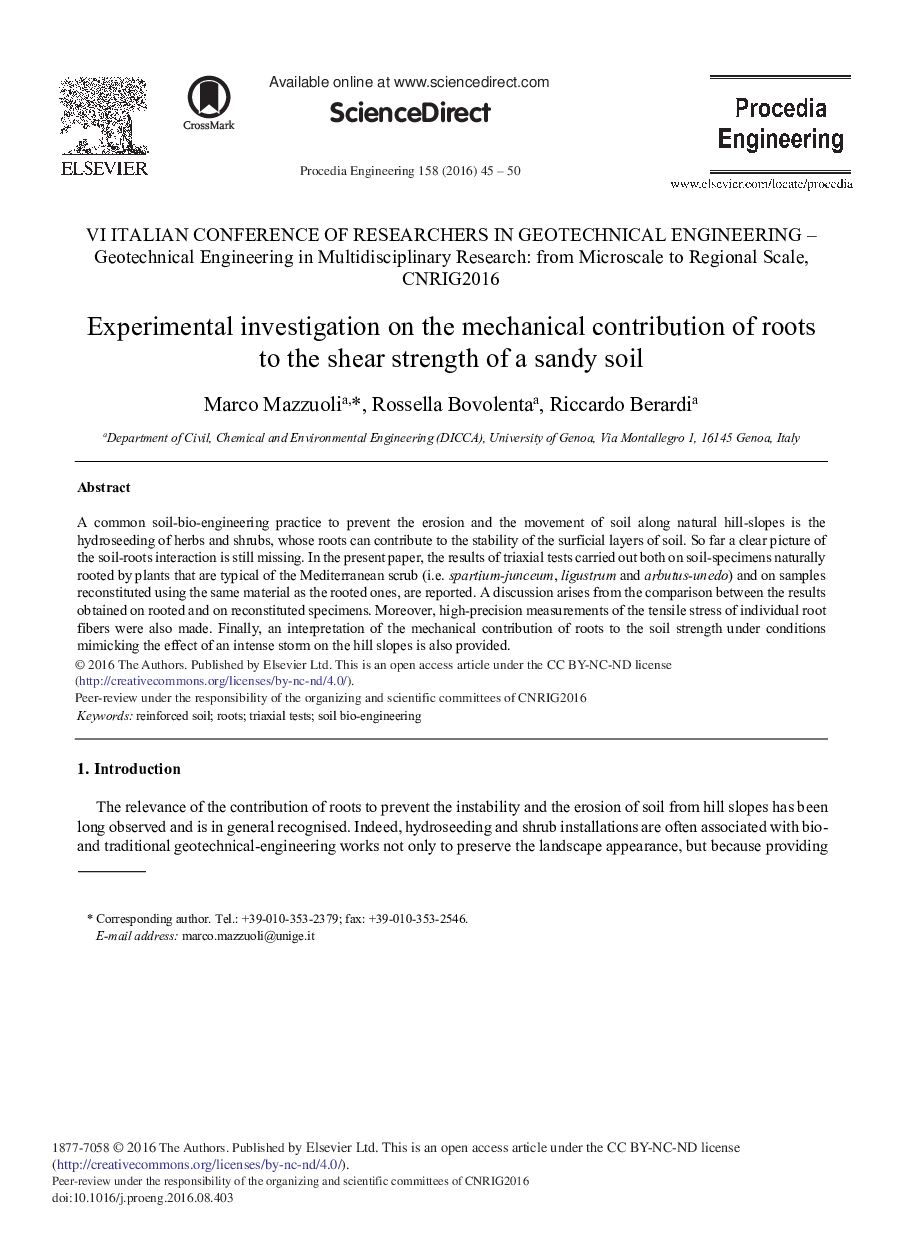| Article ID | Journal | Published Year | Pages | File Type |
|---|---|---|---|---|
| 5029980 | Procedia Engineering | 2016 | 6 Pages |
A common soil-bio-engineering practice to prevent the erosion and the movement of soil along natural hill-slopes is the hydroseeding of herbs and shrubs, whose roots can contribute to the stability of the surficial layers of soil. So far a clear picture of the soil-roots interaction is still missing. In the present paper, the results of triaxial tests carried out both on soil-specimens naturally rooted by plants that are typical of the Mediterranean scrub (i.e. spartium-junceum, ligustrum and arbutus-unedo) and on samples reconstituted using the same material as the rooted ones, are reported. A discussion arises from the comparison between the results obtained on rooted and on reconstituted specimens. Moreover, high-precision measurements of the tensile stress of individual root fibers were also made. Finally, an interpretation of the mechanical contribution of roots to the soil strength under conditions mimicking the effect of an intense storm on the hill slopes is also provided.
